Welcome to my article on 20 Types of Winter Birds in Michigan.
As the chilly winter months arrive, Michigan becomes home to a variety of fascinating bird species that brave the cold weather.
From vibrant cardinals to agile chickadees, these birds add beauty and charm to the winter landscape.
Join me as we explore the diverse avian residents of Michigan during this magical season.
Discover their unique characteristics, habitats, and behaviors that make them well-suited for the winter climate.
Let’s dive into the world of winter birds in Michigan and appreciate the wonders they bring to our snowy surroundings.
| Image | Bird | Features | Price |
|---|---|---|---|
 |
| 9.7 | Check Price |
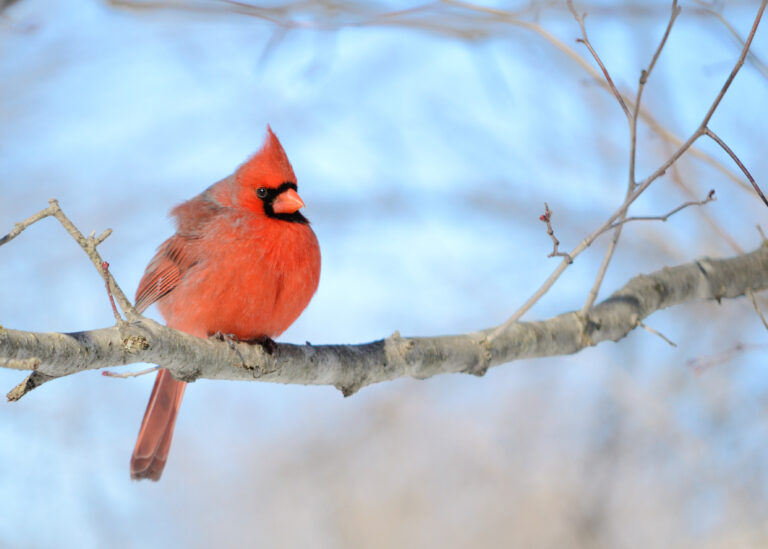 |
| 9.5 | Check Price |
 |
| 9.1 | Check Price |
 |
| 8.8 | Check Price |
 |
| 8.6 | Check Price |
 |
| 8.2 | Check Price |
 |
| 8 | Check Price |
 |
| 7.7 | Check Price |
 |
| 7.4 | Check Price |
 |
| 7.2 | Check Price |
 |
| 9.5 | Check Price |
 |
| 9.5 | Check Price |
 |
| 9.5 | Check Price |
 |
| 9.5 | Check Price |
 |
| 9.5 | Check Price |
 |
| 9.5 | Check Price |
 |
| 9.5 | Check Price |
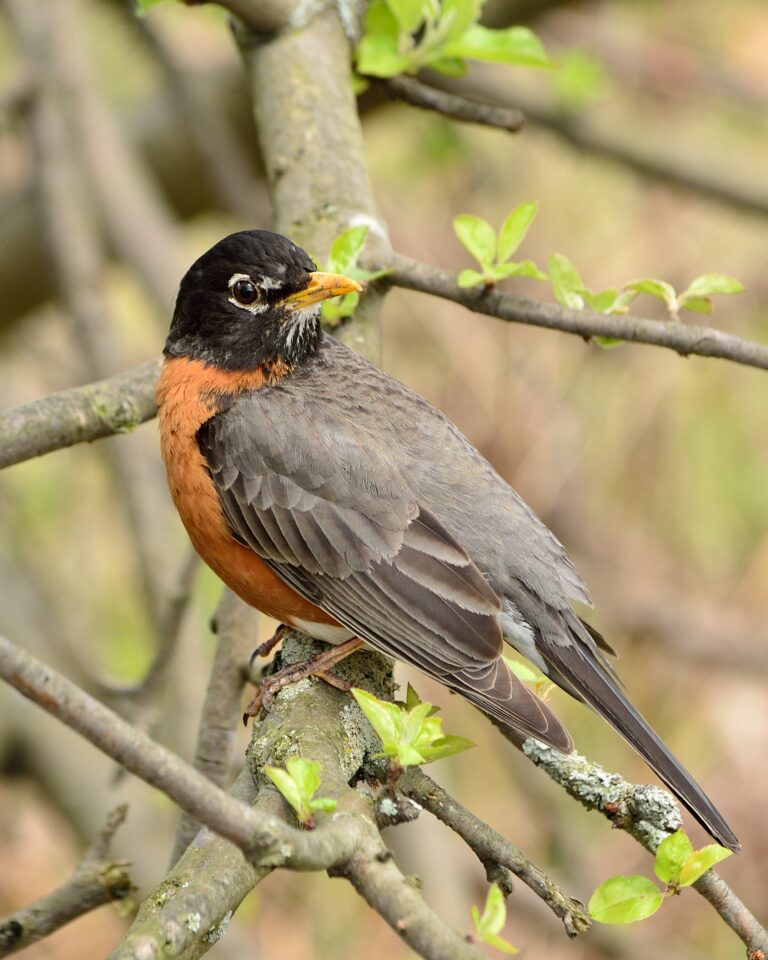 |
| 9.5 | Check Price |
 |
| 9.5 | Check Price |
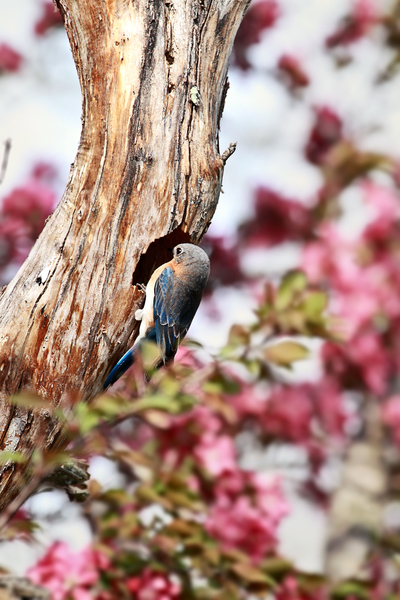 |
| 9.5 | Check Price |
If you don’t have the time to read the whole article, check out this video on 20 Types of Winter Birds in Michigan for a quick understanding.
Types of Winter Birds in Michigan
1. Downy Woodpecker

Downy Woodpecker ranges from 5.5 to 7.1 inches in length, with weight lying between 0.7 ounces and 1.1 ounces.
The wingspan varies in the range of 9.8 to 12.2 inches.
They are Northern America’s smallest woodpeckers.
They are always among the first visitors to a fresh bird feeder, which may be found all year in Michigan.
The males’ heads have a distinctive red patch on the rear that makes it easy to distinguish them from females as it is not present in females.
Both genders possess accented gray heads, however, the Hairy Woodpecker has a smaller body.
These birds eat from almost any bird feeder.
Their preferred meals are black sunflower seeds and strawberries.
Below are the characteristics of the Downy Woodpecker,
| Scientific Name | Picoides pubescens |
| Family Name | Picidae |
| Length | 5.5-6.7 inches |
| Weight | 0.7-1.0 ounces |
| Wingspan | 9.8-11.8 inches |
| Habitat | Woodlands, forests, parks, gardens |
| Food | Woodlands, forests, parks, gardens |
2. Northern Cardinal

Northern Cardinal is about 8.3 to 9.1 inches in length with a weight of approximately 1.5 to 1.7 ounces.
The wingspan of the Northern Cardinals is about 8.9 to 12.2 inches.
Northern Cardinals are one of the most well-known backyard birds in Michigan and around North America.
Females of Northern Cardinal have lighter brown feathers while males have vivid red bodies.
The distinctive Mohawks and red-orange beaks of both sexes make them immediately recognized.
These birds live in Michigan all year and like eating from large trays and hopper feeders.
Their preferred meals are seeds and nuts such as black sunflower seeds.
Below are the characteristics of the Northern Cardinal,
| Scientific Name | Cardinalis cardinalis |
| Family Name | Cardinalidae |
| Length | 8.3-9.3 inches |
| Weight | 1.5-1.8 ounces |
| Wingspan | 9.8-12.2 inches |
| Habitat | Woodlands, gardens, shrublands, parks |
| Food | Seeds, fruits, insects, buds |
3. Dark-Eyed Junco
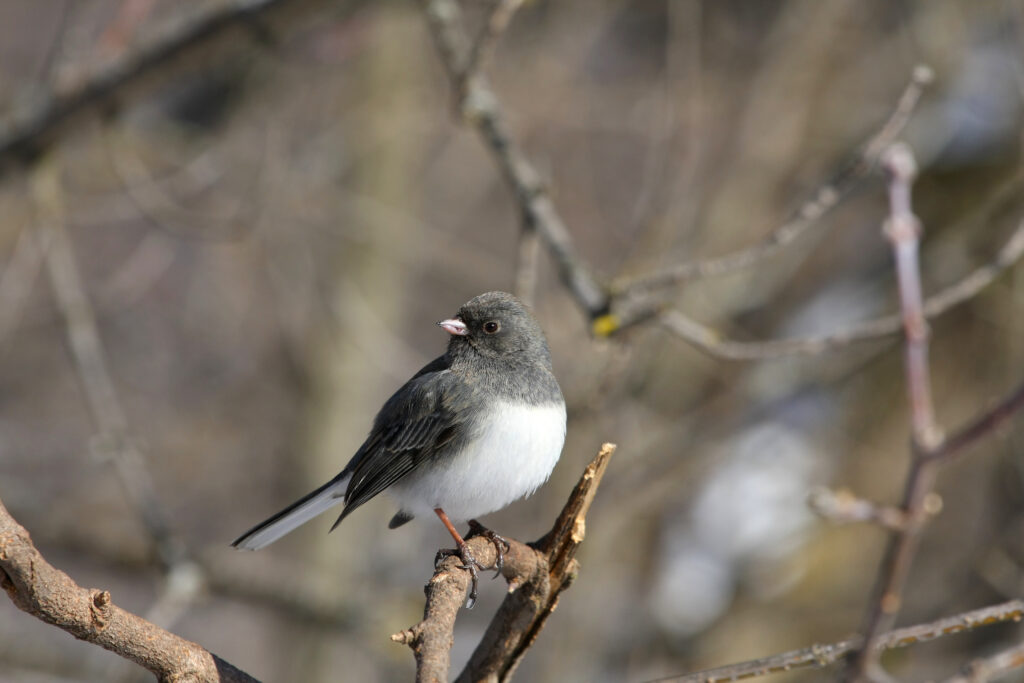
Dark-Eyed Junco’s body is from 5.5 to 6.3 inches long, with a 7.1 to 9.8 inches wingspan.
The weight of Dark-Eyed Junco varies from 0.6 to 1.1 ounces.
Because Dark-Eyed Juncos migrate to Canada during the summer, they are considered winter birds in the United States.
The bodies are dark with a darker hue on top that fades into lighter grey and white as they approach the bottom.
Females and immature Juncos, on the other hand, are buffy brown.
Pink beaks are found in both sexes.
You may find these birds all year in Northern Michigan among forested regions and woods.
Juncos like to comb the ground for food; hence they don’t attend feeders.
Scattering seeds can be an efficient way to attract these birds.
Below are the characteristics of the Dark-Eyed Junco,
| Scientific Name | Junco hyemalis |
| Family Name | Passerellidae |
| Length | 5.1-6.9 inches |
| Weight | 0.6-1.1 ounces |
| Wingspan | 7.9-9.8 inches |
| Habitat | Woodlands, forests, gardens |
| Food | Seeds, insects, berries, buds |
4. American Goldfinch
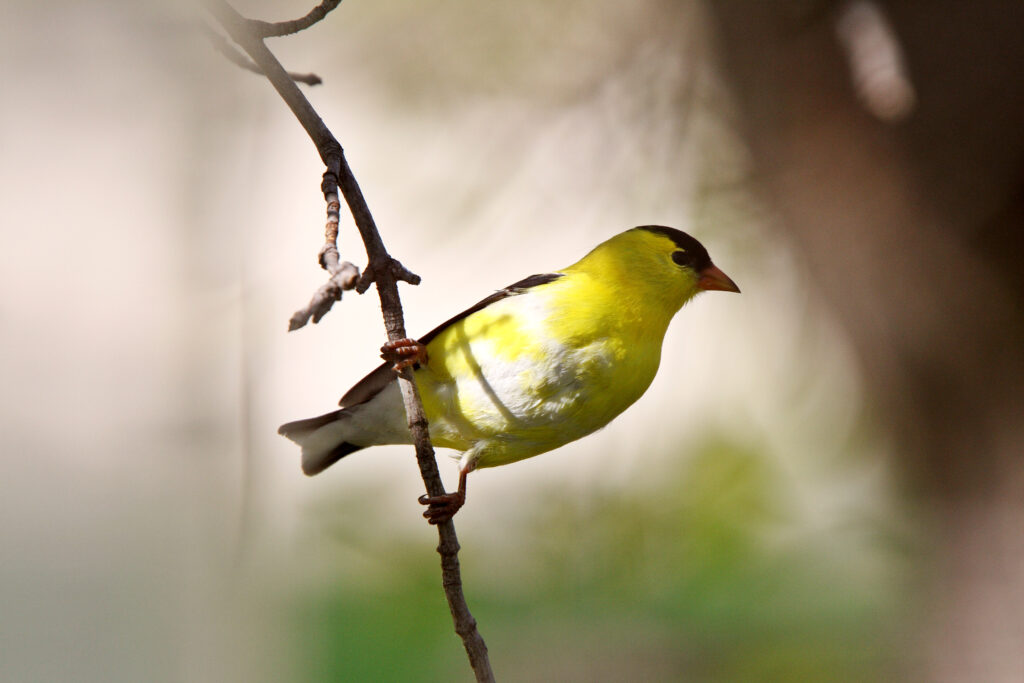
The length of the American Goldfinch ranges from 4.3 to 5.5 inches, with a weight range from 0.39 ounces to 0.71 ounces.
The wingspan of the American Goldfinch is between 7.5 to 8.7 inches.
Many birdwatchers like the American Goldfinch, often known as the wild canary, especially during the summer.
The males have a brilliant lemon yellow color with a black crown and black wingtips in the summer, while olive or greyish-yellow feathers with brown bodies in winter.
Like males in winter, females have olive or greyish-yellow feathers and brown bodies, making them appear duller.
Chickadees are roughly the same size in both sexes.
In Michigan, you may observe these birds all year and especially like thistle feeders.
Below are the characteristics of the American Goldfinch,
| Scientific Name | Spinus tristis |
| Family Name | Fringillidae |
| Length | 4.3-5.5 inches |
| Weight | 0.4-0.7 ounces |
| Wingspan | 7.5-8.7 inches |
| Habitat | Open woodlands, fields, gardens |
| Food | Seeds, especially those of thistle |
5. Blue Jay

Blue Jay varies between 8.6 and 1.8 inches in length with a weight of 2.5 ounces to 3.5 ounces.
The substantial fluffy blue crown that adorns the heads of Blue Jays gives them a unique appearance.
Their upper bodies are mainly blue, while their lower parts are off-white.
These birds also have a black circle marking the outline of their neck, giving them a necklace-like appearance.
These birds are regular visitors to platforms and peanut feeders throughout the year, as they are year-round residents of the whole state.
They consume nuts, seeds, and berries after cracking them open.
Below are the characteristics of the Blue Jay,
| Scientific Name | Cyanocitta cristata |
| Family Name | Corvidae |
| Length | 9-12 inches |
| Weight | 2.5-3.5 ounces |
| Wingspan | 13-17 inches |
| Habitat | Forests, woodlands, parks |
| Food | Seeds, nuts, insects, fruits, acorns |
6. American Crow

The size of the American Crow lies between 15.8 and 20.9 inches, with weight ranges from 11.2 to 21.9 ounces.
The bird has about 33.5 to 39.4-inch wingspan.
The bodies of American Crows are entirely black.
They’re big and have a distinctive cawing cry that many people would recognize.
Crows in the United States are also highly clever birds with outstanding problem-solving abilities.
They like to stay high in the trees to have a bird’s eye perspective of their surroundings.
These birds are year-round inhabitants of Michigan’s state parks.
Because of their enormous size, they are omnivorous and rarely frequent bird feeders.
Below are the characteristics of the American Crow,
| Scientific Name | Corvus brachyrhynchos |
| Family Name | Corvidae |
| Length | 16-21 inches |
| Weight | 11-21 ounces |
| Wingspan | 33-39 inches |
| Habitat | forests, fields, urban areas |
| Food | Carrion, insects, fruits, seeds |
7. Song Sparrow

Song Sparrow has 7.1 to 9.4 inches of wingspan weight varying from 0.4 to 1.9 ounces.
These birds have mainly brown bodies with deep brown stripes on their pale undersides, comparable to other reddish sparrows.
They may be found throughout North America, with different plumage depending on the area.
Male Song Sparrows use their distinct songs to entice females and protect their nests.
They may be seen all year on Michigan’s Lower Peninsula.
They prefer to consume a variety of seeds; therefore, they visit tray and hopper bird feeders.
Below are the characteristics of the Song Sparrow,
| Scientific Name | Melospiza melodia |
| Family Name | Passerellidae |
| Length | 5.5-7 inches |
| Weight | 0.6-1.1 ounces |
| Wingspan | 7.9-9.8 inches |
| Habitat | fields, marshes, forests, gardens |
| Food | Seeds, insects, fruits, berries |
8. Tufted Titmouse

The size of this Tufted Titmouse lies in the range of 5.5 to 6.3 inches in length and 7.9 to 10.2 inches in wingspan.
Their weight ranges from 0.6 to 0.9 ounces.
In Michigan, these tiny birds are familiar visitors to backyards and feeders.
They have unique tiny Mohawks, similar to the Northern Cardinal, that might help you identify them.
Tufted Titmice have silver bodies from the top and greyish-white bodies from the bottom.
A black mark can also be seen immediately above their black beaks.
You can find these birds all year on the Lower Peninsula.
They are, however, uncommon on the Upper Peninsula.
Below are the characteristics of the Tufted Titmouse,
| Scientific Name | Baeolophus bicolor |
| Family Name | Paridae |
| Length | 5.5-6.3 inches |
| Weight | 0.6-0.9 ounces |
| Wingspan | 7.9-10.6 inches |
| Habitat | Deciduous forests, woodlands, parks |
| Food | Seeds, nuts, insects, berries |
9. Mourning Dove

The Mourning Dove is nearly 9.1 to 13.4 inches in length, male with a weight of 3.4 ounces to 6.0 ounces and female with 3.0 oz. to 5.5 ounces.
The wingspan of a Mourning Dove is 17.7 inches.
Mourning Doves, which are somewhat more extensive than American Robins, frequently hang from wires, fences, or trees.
They may come to your tray feeder, but they’re more likely to be seen wandering about on the ground.
The grey bodies of these birds are topped with black markings.
A distinctive cyan-colored ring encircles their eyes, and their undersides are a soft peach tint.
Although they use feeders, these doves prefer to forage for seeds on the ground.
They are attracted to black sunflower seeds in tray feeders.
Below are the characteristics of the Mourning Dove,
| Scientific Name | Zenaida macroura |
| Family Name | Columbidae |
| Length | 9-13 inches |
| Weight | 4-6 ounces |
| Wingspan | 17-18 inches |
| Habitat | Open woodlands, fields, urban areas |
| Food | Seeds, grains, fruits, insects |
10. Northern Flicker

Northern Flicker’s length lies from 10 to 12.2 inches having a wingspan ranging from 5 to 20.1 inches.
The weight of these birds is between 9 and 5.6 ounces.
Northern Flickers may be seen in backyards all across the United States, not only in Michigan.
They range in size from medium to giant and prefer to eat insects.
As a result, they aren’t frequent feeders.
They are distinguished by a red patch on the back of their necks, black patches on their underparts, striped grey, and black wings, and an all-black headband.
Bright orange Northern Flickers have yellow feathers underneath their wings and are located in Michigan.
These birds can be seen all year on the Lower Peninsula, but only during the mating season north of there.
Consider installing a birdbath in your backyard if you want to attract these birds.
Below are the characteristics of the Northern Flicker,
| Scientific Name | Colaptes auratus |
| Family Name | Picidae |
| Length | 11-14 inches |
| Weight | 3-5 ounces |
| Wingspan | 16-20 inches |
| Habitat | Forests, woodlands, open areas |
| Food | Insects, ants, beetles, fruits, seeds |
11. Hairy Woodpecker

Hairy woodpeckers range from 1 to 10.2 inches in length and 10 to 16.1 inches in wingspan.
Their weight is about 2. 4 ounces to 3.4 ounces.
Hairy Woodpeckers resemble Downy Woodpeckers in appearance but are bigger and lack the red circle on the nape of the head.
Throughout the year, both species can be spotted in the same locations in the state.
Although Hairy Woodpeckers do not visit bird feeders, they are drawn to seed and suet feeders.
Below are the characteristics of the Hairy Woodpecker,
| Scientific Name | Picoides villosus |
| Family Name | Picidae |
| Length | 7-10 inches |
| Weight | 1.5-3 ounces |
| Wingspan | 13-17 inches |
| Habitat | Forests, woodlands, parks |
| Food | Insects, larvae, seeds, nuts |
12. House Finch

House Finch vary in size from 4.9 to 6.1 inches, having a wingspan that ranges from 8.1 to 10.5 inches.
The weight is between 0.6 ounces and 0.9 ounces.
The House Finch is another backyard bird that you may expect to see regularly in Michigan.
Although becoming an exotic species, they aren’t as despised as House Sparrows since they aren’t as damaging.
These birds are exclusively found on the Lower Peninsula and may rush to your feeders in the form of hordes and flocks.
Their male has a reddish hue on their heads and chests and is simpler to recognize than females, who are all brown.
These birds are more likely than Goldfinches to attend feeders.
Black sunflower seeds work well for luring them in.
Below are the characteristics of the House Finch,
| Scientific Name | Haemorhous mexicanus |
| Family Name | Fringillidae |
| Length | 5-6 inches |
| Weight | 0.6-1.1 ounces |
| Wingspan | 8-9 inches |
| Habitat | Urban areas, forests, shrublands |
| Food | Seeds, fruits, buds, insects |
13. European Starling

European Starling varies in length from 7.9 to 9.1 inches and in weight from 2.1 to 3.4 ounces.
They have a wingspan range of 12.2 to 15.8 inches.
European Starlings, which are frequently seen as pests, are prime examples of invasive species.
They’ve taken the county by storm since then due to their extraordinary adaptive abilities.
Their beauty conceals their destructive tendencies as they damage other birds’ nests and murder their young.
The dark-colored bodies of these birds generate a combination of purple, green, and blue iridescence in daylight, giving them a fascinating appearance.
Their beaks and feet are yellow and they have white patches on their wings and backs.
They’re year-round residents who may be found all across the state.
Furthermore, their adaptability permits them to consume almost everything.
You don’t need to provide any specific food to lure these birds; they’ll come to your backyard on their own.
Below are the characteristics of the European Starling,
| Scientific Name | Sturnus vulgaris |
| Family Name | Sturnidae |
| Length | 7.5-9 inches |
| Weight | 2.1-3.4 ounces |
| Wingspan | 12-15 inches |
| Habitat | Urban areas, agricultural fields |
| Food | Insects, fruits, berries, seeds |
14. House Sparrow

House sparrows have a length ranging from 5.9 to 6.7 inches and wingspan from 7.5 to 9.8 inches.
They have a weight lying within the range of 0.9 to 1.1 ounces.
House Sparrows are typically seen as pests.
Except for starlings, these are the only wild bird species in the United States that can be lawfully captured and put down painlessly.
They were also made available for free in New York, and they have now spread across the country.
The bodies of these invading birds are brown, with black and dark brown striping on the chests and wings.
They’re year-round residents who may be found all across the state.
They’ll consume almost anything, putting native species at risk.
Below are the characteristics of the House Sparrow,
| Scientific Name | Passer domesticus |
| Family Name | Passeridae |
| Length | 5.5-6.3 inches |
| Weight | 0.9-1.4 ounces |
| Wingspan | 7.5-9 inches |
| Habitat | Urban areas, agricultural fields |
| Food | Seeds, grains, insects, scraps |
15. Red-Bellied Woodpecker

Red-Bellied Woodpeckers range in size from 9.2 to 10.3 inches and 15.7 to 17.8 inches of wingspan.
Their weight lies between the capacity of 2.2 to 3.2 ounces.
These medium-sized woodpeckers are commonly observed in backyards and at bird feeders.
The crimson on their bodies is a beautiful stripe that goes down the back of their heads and the length of their necks.
The majority of their tummy is white, with a red-washed patch visible if you look closely.
Their wings, which are adorned with distinctive black and white barring, are another distinguishing trait of these birds.
Lower Michigan is home to the majority of Red-bellied Woodpeckers.
They prefer suet feeders, although they may occasionally visit seed feeders.
Below are the characteristics of the Red-Bellied Woodpecker,
| Scientific Name | Melanerpes carolinus |
| Family Name | Picidae |
| Length | 9-10 inches |
| Weight | 2.8-3.9 ounces |
| Wingspan | 13-16 inches |
| Habitat | Forests, woodlands, parks |
| Food | Insects, nuts, fruits, seeds |
16. White-breasted Nuthatch

White-Breasted Nuthatch has 5.1 to 5.5 inches in length and 7.9 to 10.6 inches in wingspan.
Their weight is approximately 0.6 ounces to 1.1 ounces.
The White-Breasted Nuthatch is a famous backyard bird in Michigan, and you may find it all year round.
Nuthatches are so named because they bury nuts beneath tree bark and then hatch them out with their sharp beaks.
A prominent black band on the top of their heads as well as a whitish face and belly help to identify these birds.
These birds will eat from almost any bird feeder.
Their preferred meals are black sunflower seeds and insects.
Below are the characteristics of the White-breasted Nuthatch,
| Scientific Name | Sitta carolinensis |
| Family Name | Sittidae |
| Length | 5.5 inches |
| Weight | 0.6-1 ounce |
| Wingspan | 8.5-11 inches |
| Habitat | Woodlands, forests, parks |
| Food | Insects, seeds, nuts, spiders |
17. Black Cap Chickadee

Black Cap Chickadees vary from 7 to 5.9 inches in length and 3 to 8.3 inches in wingspan.
Their weight is from 3 ounces to 0.5 ounces.
These small birds are visible all year and feature a black cap and bib that contrasts sharply with their white faces.
The remainder of their physique is a mixture of black and white.
When you place a new tube, tray, or hopper feeder in your yard, Black-Capped Chickadees will be one of the first birds to greet you.
Seeds, particularly black sunflower seeds, insects, and berries, are favorites.
Below are the characteristics of the Black Cap Chickadee,
| Scientific Name | Poecile atricapillus |
| Family Name | Paridae |
| Length | 4.7 inches |
| Weight | 0.3-0.5 ounces |
| Wingspan | 6.3-8.3 inches |
| Habitat | Woodlands, forests, parks |
| Food | Insects, seeds, berries, nuts |
18. American Robin

American Robins are approximately 9.0 to 11.0 inches in length and 14.7 to 16.5 inches in wingspan.
They vary from 2.3 to 2.8 ounces in weight.
The American Robin is not just a famous backyard visitor but Michigan’s state bird.
Its greyish-brown body is contrasted with a rusty orange underbelly and a matching beak.
These birds prefer worms and other tiny invertebrates.
They aren’t keen on seeds; therefore, they don’t frequent feeders.
To encourage them to your yard, you can utilize mealworms and fruiting plants.
Insects, berries, and seeds, particularly black sunflower seeds, are favorites.
Below are the characteristics of the American Robin,
| Scientific Name | Turdus migratorius |
| Family Name | Turdidae |
| Length | 9-11 inches |
| Weight | 2.7-3 ounces |
| Wingspan | 12-16 inches |
| Habitat | Woodlands, forests, gardens |
| Food | Insects, worms, fruits, berries |
19. Common Grackle

The size of Common Grackle varies in length from 11.0 to 13.4 inches and 14.2 to 18.1 inches in wingspan.
They have a weight range of 2.6 to 5.0 ounces.
Grackles, like starlings, belong to the bully bird family, yet their shimmering feathers make them extremely attractive in the proper light.
They are mostly black and they will lodge with some other blackbird species, sometimes in massive flocks of millions.
Their uniform coloration and yellow-ringed eye make them simple to spot.
Except for a tiny part of southern Michigan, where they live all year, grackles are only seen in Michigan during the mating season.
Grackles are foragers and eat almost anything; they are frequently seen as pests.
Below are the characteristics of the Common Grackle,
| Scientific Name | Turdus migratorius |
| Family Name | Turdidae |
| Length | 9-11 inches |
| Weight | 2.7-3 ounces |
| Wingspan | 12-16 inches |
| Habitat | Woodlands, forests, gardens |
| Food | Insects, worms, fruits, berries |
20. Eastern Bluebirds

Eastern Bluebirds can be seen throughout the year in Michigan but they are more numerous in the winter.
Tiny thrushes with huge eyes and bellies, Eastern Bluebirds are small thrushes.
The males have a deep blue back and a crimson underbelly.
Females have fuzzier heads with azure wings and tails as well as less vivid reddish breasts.
They dwell in meadows and can be seen hunting for insects perched on wires, poles, or low trees.
Bluebirds seldom visit feeders, but they adore live mealworms.
It may seem disgusting, but that tiny wiggle sends the Bluebirds dancing all the way to your yard.
They could also utilize nest boxes, so put one up as soon as possible and maintain it clean.
Below are the characteristics of the Eastern Bluebirds,
| Scientific Name | Sialia sialis |
| Family Name | Turdidae |
| Length | 6.5-7 inches |
| Weight | 1-1.1 ounces |
| Wingspan | 9.8-12.6 inches |
| Habitat | Open woodlands, fields, meadows |
| Food | Insects, berries, fruits, small invertebrates |
Final Words
In conclusion, the diverse range of winter birds found in Michigan is a testament to the state’s rich natural habitats and favorable conditions for avian species.
From majestic raptors like the snowy owl and the bald eagle to the tiny, resilient chickadee, Michigan offers a haven for birdwatchers and nature enthusiasts during the colder months.
The variety of winter birds, each with its unique adaptations and behaviors, adds beauty and liveliness to Michigan’s landscapes, bringing joy and inspiration to those who take the time to appreciate them.
Whether you’re a seasoned birdwatcher or a curious beginner, exploring the winter birdlife in Michigan is an enriching experience that connects us to the wonders of nature and reminds us of the importance of preserving and protecting these remarkable creatures and their habitats.
So grab your binoculars, bundle up, and venture out to witness the splendor of Michigan’s winter birds—it’s a truly magical sight that will leave you in awe and deepen your appreciation for the natural world around us.
FAQ
Where can I find winter birds in Michigan?
Winter birds can be found throughout Michigan, but some popular locations include state parks, nature reserves, and wildlife refuges such as Sleeping Bear Dunes National Lakeshore, Huron-Manistee National Forest, and Pointe Mouillee State Game Area.
Do all birds migrate during the winter in Michigan?
No, not all birds migrate. While some species migrate south during the winter, many birds in Michigan are year-round residents, adapting to the colder conditions.
Are there any rare or unique winter birds that can be spotted in Michigan?
Yes, Michigan is known for occasional sightings of rare winter birds such as the snowy owl, which migrates from the Arctic, and the Bohemian waxwing, a nomadic species that occasionally visits the state.
How can I attract winter birds to my backyard in Michigan?
To attract winter birds, provide food sources such as bird feeders filled with seeds, suet, and nuts. Providing fresh water and creating sheltered areas with evergreen trees or shrubs can also attract birds to your backyard.
Can I photograph or observe winter birds without disturbing them?
Yes, you can observe and photograph winter birds from a distance without causing disturbance. Use binoculars or a telephoto lens to get a closer look and avoid approaching nests or feeding areas too closely.
Are there any organized birdwatching events or groups in Michigan during the winter?
Yes, there are birdwatching events and groups in Michigan that organize outings and activities during the winter months. Check with local birding organizations or nature centers for upcoming events.
Last Updated on June 5, 2023 by Lily Aldrin
